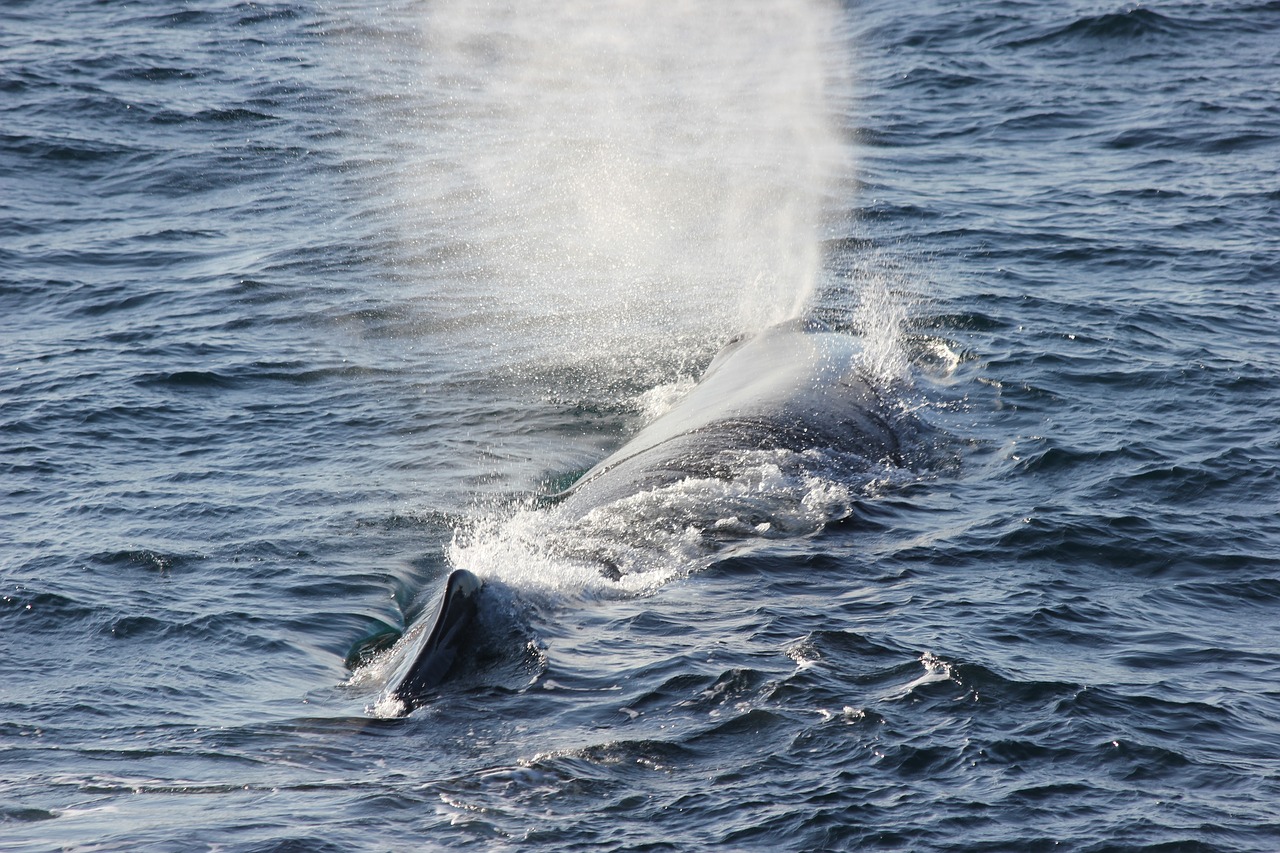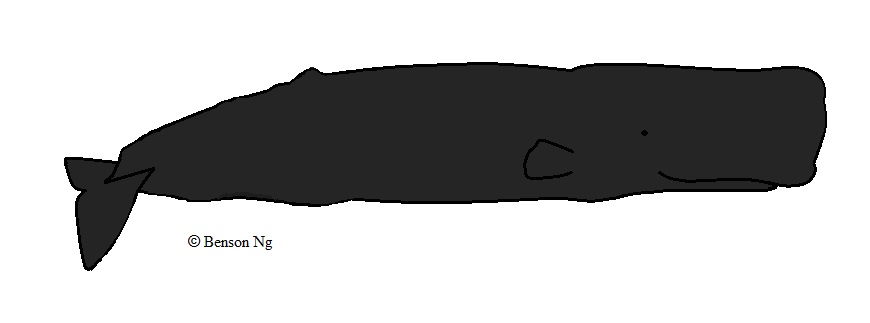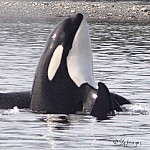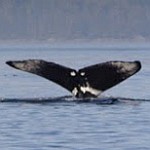Have you ever wondered how Sperm Whales got their name? Sperm is a derivative of Spermaceti oil that is a waxy substance found in large quantities in the huge heads of Sperm whales that was prized for its use in oil lamps and candles before it was banned in 1980s. Despite being a main target for the whaling industry, Sperm whale numbers are quite stable. Population estimates range from hundreds of thousands to over one million worldwide. The largest of the toothed whales, Sperm whales (Physeter macrocephalus) are distinctive in their appearance with their giant block heads, wrinkly skin, and s-shaped blowhole that sprays at a 45 degree angle. Their heads house the largest brain of any animal in existence.
Sperm whales can be found in all oceans but prefer deep warm water. This is especially true for females that never seem to travel to higher latitudes and they form lasting bonds with each other, creating units for communal care of their young. Males on the other hand tend to leave by the time they are four – temporarily joining up with other young males travelling north but eventually end up alone, returning to tropical waters to breed. They have no defined migration patterns and travel the globe feeding and breeding.
Feeding dives can last over an hour and can go on for kilometres in search of large squid which make up almost their entire diets. Often their skin can show battle scars from hunting these large prey. They also have been known to hunt rays, octopi, fish, crabs and megamouth sharks, using echolocation in the dark deep water. As Sperm whales need to eat about 3% of their body weight per day, they spend most of their time feeding. In the afternoons, they take a break from hunting and spend time socializing calling out to each other with the short, loud communicative clicks that have been recorded at 230 decibels! They also spend much of their social time rubbing against each other.
While large fully grown male Sperm Whales have no predators, groups of females with young need to defend against Orca preying on their calves or injured adults. They protect the weak member by encircling them, with their heads in and their powerful tails facing out – in what is called the ‘marguerite formation’ as from above it forms the shape of a flower.
Sperm Whale – Phyester macrocephalus specifics:
Length:
Up to 16 metres (52 ft)
Weight:
Up to 41,000 kg
Colour:
Dark Gray
Features:
Their heads can make up one-third the size of their bodies
Long narrow underslung jaw
Humps on back with one large one that resembles a dorsal fin
Small paddle shaped fins used for steering




